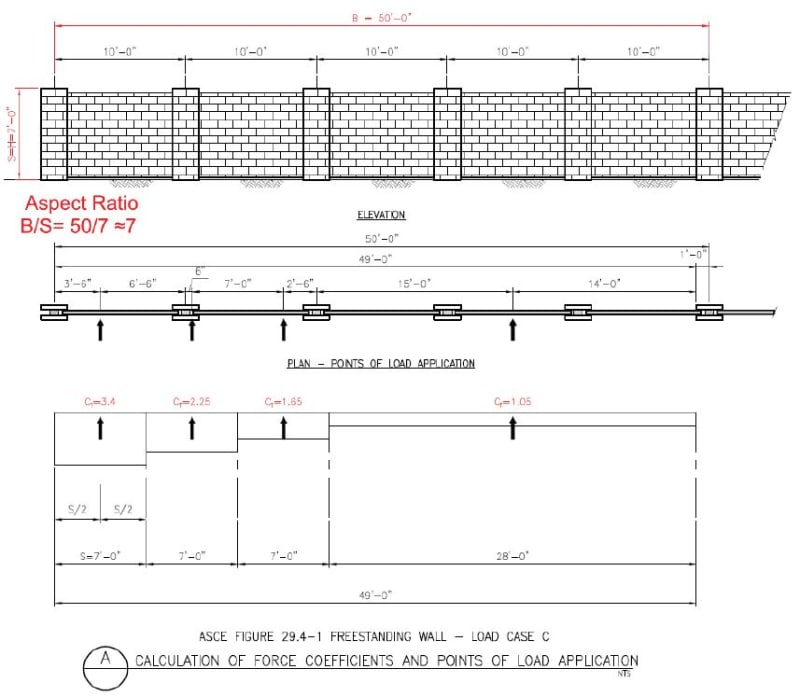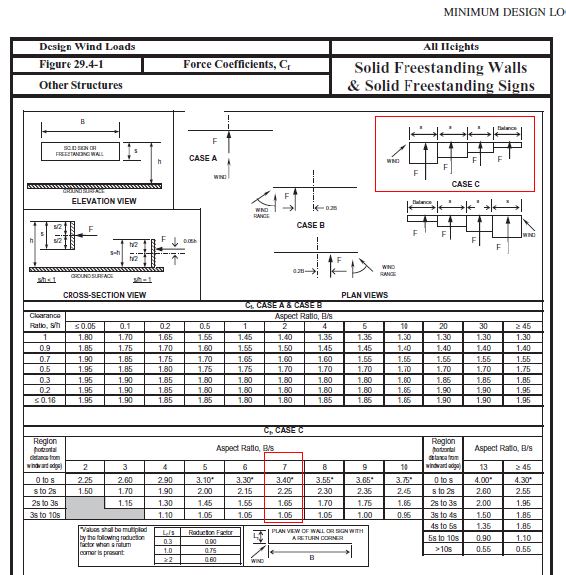JoelTXCive
Civil/Environmental
- Jul 24, 2016
- 933
I'm trying to calculate the wind loading on a freestanding brick wall using the ASCE 10 Chapter 29 provisions.
There are 3 load cases that we are required to apply (Case A,B & C).
Cases A&B are pretty straight forward, but Case C seems unnecessarily difficult and confusing.
For this exercise, lets assume I have a 7ft tall wall of 50ft length; and I have columns spaced at 10' O.C.
If I follow the ASCE Figure 29.4-1 rules for load case C, then I will apply point loads at 7ft C-C spacing. (which doesn't line up with my column spacing, so the math gets harder)
See below images, or PDF.
Am I applying the guidelines correct?


Thank you for the input!
There are 3 load cases that we are required to apply (Case A,B & C).
Cases A&B are pretty straight forward, but Case C seems unnecessarily difficult and confusing.
For this exercise, lets assume I have a 7ft tall wall of 50ft length; and I have columns spaced at 10' O.C.
If I follow the ASCE Figure 29.4-1 rules for load case C, then I will apply point loads at 7ft C-C spacing. (which doesn't line up with my column spacing, so the math gets harder)
See below images, or PDF.
Am I applying the guidelines correct?


Thank you for the input!
